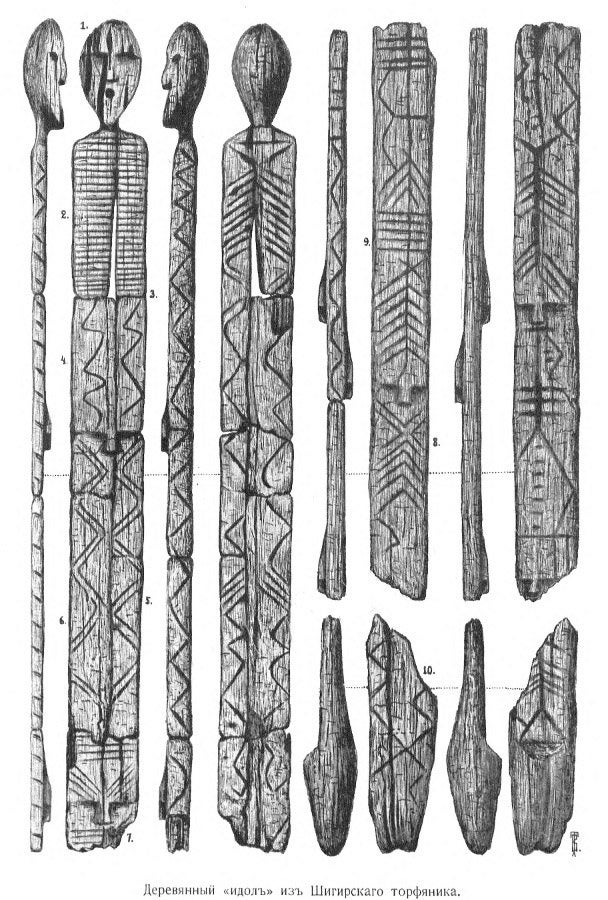A mysterious wooden statue covered in undeciphered markings is 11,000 years old, according to new tests -- or 1,500 years older than previously believed.
That makes the Shigir Idol the oldest known wooden sculpture in the world, the Siberian Times reported.
The idol is more than twice as old as the Great Pyramid of Giza, three times older than the ancient city of Babylon, and five times as old as Al Khazneh, the most famous of the ruins in the ancient city of Petra.
Radiocarbon dating conducted in 1997 gave the statue an age of 9,500 years old, but the results were controversial. To confirm the statue's age, seven "minuscule" samples of wood were sent to Germany for analysis by accelerated mass spectrometry, the Siberian Times reported.
The new analysis found the sculpture to be 11,000 years old, and made from a larch that was 157 years old when it was felled by stone tools.
"This confirms that hunters and fishermen from Urals created works of art as developed and as monumental as ancient farmers of the Middle East," the website quoted the museum as saying.
The idol was found in the late 19th century in a bog in the Urals in western Siberia. Conditions in the bog preserved the wood so well that not only is the idol's carved face still very much visible, but a series of lines, squiggles and other marks that run along its nine-foot length can also be seen.
Originally, the idol was even taller -- perhaps more than 17 feet high -- but some pieces have been lost over the years.
A more complete version of the idol can be seen in sketches made by archaeologist Vladimir Tolmachev more than a century ago:
(Story continues below image.)

Along with the face at the top, several faces are visible at various points along the sculpture.
It's not clear what the faces or the lines and markings signify, but there are a number of theories.
This is a masterpiece, carrying gigantic emotional value and force, a unique sculpture; there is nothing else in the world like this," Professor Mikhail Zhilin of the Russian Academy of Sciences' Institute of Archeology told the Siberian Times last year. "It is very alive, and very complicated at the same time."
He said the markings are "nothing but encrypted information."
"People were passing on knowledge with the help of the idol," he said, calling it "an utter mystery to modern man."
Itogi News wrote in 2007 that some anthropologists believe straight lines on the idol could represent the land, the horizon or the boundary between heaven and earth, while a wavy line could mean water, a snake or a lizard, and a zigzag could indicate danger.
The Encyclopedia of Stone Age Art called the idol "one of the greatest sculptures of the late Stone Age" and said further research may determine "whether the signs represented a set of pictorial instructions, like a map."
The Encyclopedia also mentions another possibility:
"Although all commentators refer to its exceptional height, and its enigmatic geometric symbols, no one seems to have mentioned the possibility that it may be an early prototype of the totem pole, popularized by North American Indians who also originated in Siberia."
The idol is currently on display at the Sverdlovsk Regional History Museum.
Also on HuffPost:
